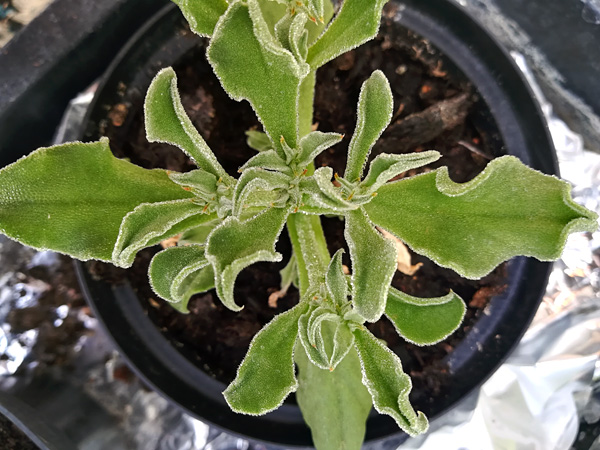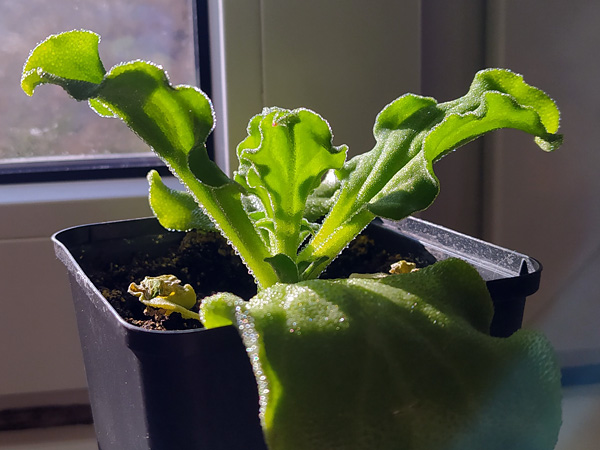From C3 to CAM photosynthesis and back again – remarkable salt stress tolerance abilities of common ice plant (Mesembryanthemum crystallinum L.)
CAM (Crassulacean Acid Metabolism) photosynthesis is a particular type of photosynthesis, often performed by plants of arid environments. Its essence is high water-use efficiency. CAM differs from other types of photosynthesis in the way CO2 is fixed – it takes place at night when stomata are open, and the fixed CO2 is stored in the malate form. During the day, stomata generally remain closed to protect against water loss, and CO2 is used in the dark phase of photosynthesis, like in the case of C3 plants. CAM occurs in only about 6% of all species of higher plants. Interestingly, among these plants, there is a small group of the so-called CAM facultative plants – species in which CAM appears only in the presence of some stress factors, such as drought or salinity.
One of the plants capable of changing its photosynthetic metabolism from C3 to CAM is the common ice plant (Mesembryanthemum crystallinum L.), native to South and East Africa. This plant is a model plant in many years of research carried out by the team of Prof. Zbigniew Miszalski from our Institute. This research focuses on physiological, biochemical and molecular aspects of C3 and CAM photosynthesis. In recent years, Prof. Miszalski, in cooperation with scientists from the Pedagogical University in Kraków and the Jagiellonian University, showed that the common ice plant is able to return to the previously performed C3 photosynthesis after switching off the CAM inducing factors. The latest article, co-authored by Prof. Miszalski, provides detailed information about the rate and extent of changes in physiological parameters accompanying the change between C3 and CAM types. During CAM induction (with NaCl as a stress factor), a reduction in the quantum yield of PSII (Y(II)) and PSI (Y(I)) and an increase of non-photochemical quenching (NPQ) were observed. The values of these parameters returned to their initial state (characteristic for C3 plants) already 48h after the removal of NaCl from the substrate. The swelling of thylakoids and the changes in the size of starch grains, characteristic for CAM photosynthesis, disappeared even faster – 24h after the removal of the stressor. Also, it was revealed that changes in the functioning of photosystems and the state of chloroplast ultrastructure were accompanied by the induction of genes related to the PSI and PSII reaction centres. The results show that the common ice plant has one of the most flexible photosynthetic pathways among facultative CAM plants, demonstrating its remarkable ability to adapt to environmental stresses.
See the original article:
Nosek M., Gawrońska K., Rozpądek P., Sujkowska‐Rybkowska M., Miszalski Z., Kornaś A. 2021. At the edges of photosynthetic metabolic plasticity – on the rapidity and extent of changes accompanying salinity stress‐induced CAM photosynthesis withdrawal. International Journal of Molecular Sciences 22: 8426. DOI

Common ice plant.
Photo: Paulina Supel.

Common ice plant.
Photo: Adriana Kaczmarczyk.

Common ice plant.
Photo: Adriana Kaczmarczyk.





